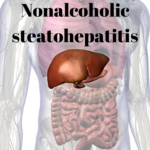Atopic dermatitis is a chronic relapsing inflammatory skin disease that results in red, inflamed, dry, and itchy skin. The disease has a genetic predisposition and usually begins in childhood. Itching and hyperirritability of the skin are its main features. The term atopic is from the Greek meaning ‘out of place’ or ‘strange’. The term dermatitis […]
Systemwise
Migraine – Symptoms, Causes, and Treatment
A migraine is a neurological condition that can cause a moderate or severe headache. It is felt as throbbing pain, usually on one side of the head. It may be accompanied by nausea, vomiting, and extreme sensitivity to light and sound. A migraine attack can last for hours to days. The pain can be so […]
Meibomian Gland Dysfunction- Risk Factors, Clinical Features, Diagnosis, and Treatment
Meibomian gland dysfunction (MGD) is a chronic condition in which the meibomian glands present in the eyes do not secrete enough oil or secrete oil of poor quality. The condition is also known as “meibomianitis.” It occurs due to blockage or other abnormality of the meibomian glands so they don’t secrete enough oil into the […]
Dry Eye: Causes, Symptoms, Prevention, and Treatment
Dry eye is a condition in which the eyes don’t produce enough tears for adequate lubrication of the eyes. It is a very common condition, particularly in older individuals. It is also known as dry eye syndrome (DES), keratoconjunctivitis sicca (KCS), or keratitis sicca. It affects around 5–34% of the general population. Among older people, […]
Sjogren’s Syndrome -Features, Diagnosis, Self-Care Tips, and Treatment
Sjogren’s syndrome is an autoimmune disease characterized by two common symptoms – dry eyes and a dry mouth. In autoimmune diseases, the immune system of the body mistakenly identifies certain parts of one’s own body as foreign invaders. In response, it releases special antibodies, called autoantibodies that attack a person’s own cells and tissues. These […]
Pulse Oximetry – Indications, Procedure and Limitations
Pulse oximetry is a test that is used to measure the oxygen saturation level or the oxygen level in the blood. In other words, it tells whether the heart and the lungs are supplying enough oxygen to meet the body’s requirements. It is a quick, non-invasive, and painless procedure. They are called pulse oximeters since […]
NASH or Nonalcoholic steatohepatitis
Nonalcoholic steatohepatitis (NASH) is inflammation and damage of the liver caused due to the deposition of fat in the liver. Read more about Liver Anatomy, Structure and Function Read more about Liver Diseases- Causes, Symptoms, Diagnosis, and Treatment NASH is part of a group of conditions called nonalcoholic fatty liver disease (NAFLD) which means simply […]
Itching or Pruritus : Causes, Diagnosis, and Treatment
Itching is an unpleasant sensation of the skin that leads to a desire to rub or scratch the skin area so as to get relief. Itch is a major somatic sensation, along with pain, temperature, and touch. Pruritus is the medical term for the itch. Pruritus can be localized to a particular area of the […]
10 Dos and Don’ts About Acne Care
Acne (pimples) is a common, self-limiting skin condition that affects boys and girls in their teenage and early youth. In some cases, acne persists even up to 35-40 years of age. Acne care is demanding but doable though it requires persistence and prudence in a lot of cases. Most of the acne care is self-managed […]
Nausea-Causes, Investigations, Home Remedies and Treatment
Nausea is an uncomfortable sensation of an urge to vomit. It is the sensation that the stomach wants to empty itself. Nausea may or may not lead to vomiting. Vomiting is the actual act of forcible emptying of the stomach contents through the mouth. Retching or dry heaves is the act of vomiting where there […]










